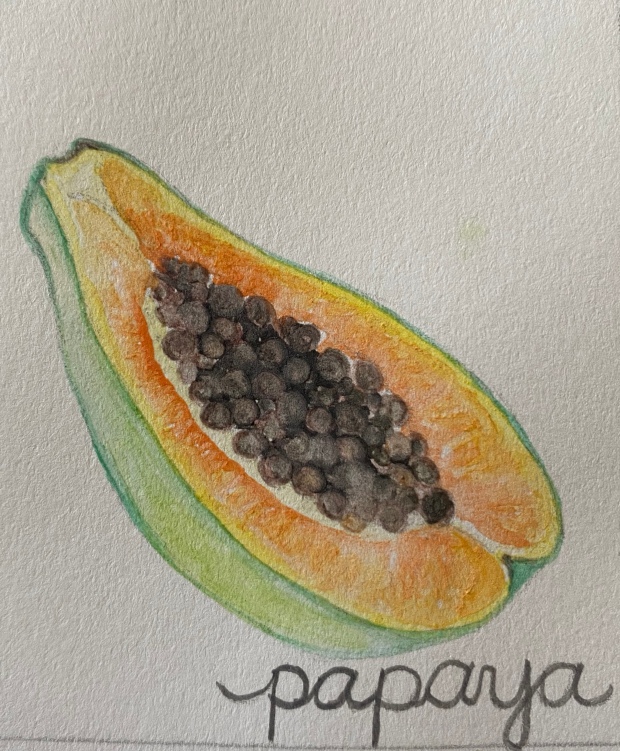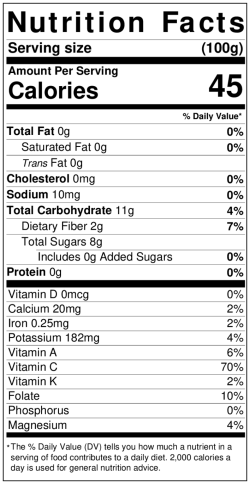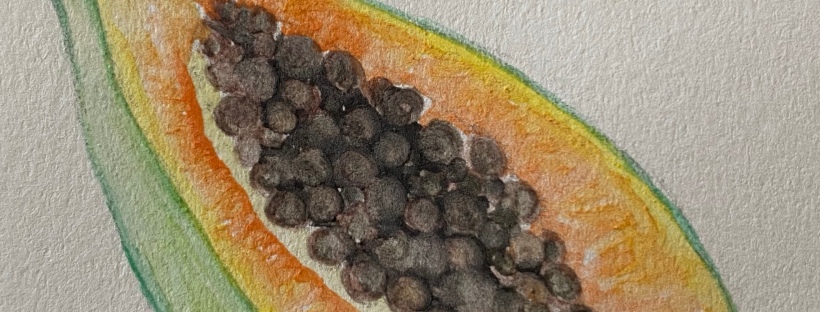
“Papaya,” watercolor.
This tropical fruit originated in the Americas, specifically the South/Central region. Spanish conquistadors are the reason it was spread and cultivated in other tropical climates around the globe.
In the papaya’s reproduction stage, the flowering plants they come from are apart of the LGBTQIA+ community. “Plants are dioecious or hermaphroditic, with cultivars producing only female or bisexual (hermaphroditic) flowers preferred in cultivation… [and] since bisexual plants produce the most desirable fruit and are self-pollinating, they are preferred over female or male plants.[1]”
Now in terms of the actual fruit, it has some special characteristics that make it a hit or miss amongst those who attempt to eat it. For some, like me, papaya smells and tastes bad. For others, it’s quite the contrary. It’s due to the enzyme papain. Papain has a “pungent, somewhat offensive” smell and “unpleasant” taste.[2]” Papain resembles the digestive enzymes humans have in their stomachs already and some people are very sensitive to it. Apparently the trick to making it smell and taste better is lime juice! It’s uncertain whether or not I’m willing to try that just to eat it.
There are two main types of papayas: Mexican and Hawaiian. From those types many varieties descend. Hawaiian varieties are what you’ll most commonly find in US grocery stores.

Papaya Nutrition Label. Created by Keanna.
The nutritional benefits are also aplenty with this fruit. Its enzymes support the digestive system, its antioxidants ward of cancers and Alzheimer’s, and its high Vitamin C content support immune system health.
Ghanaian foodie and cinematographer Nino shows you how to make Stew with Pawpaw (Papaya). He refers to it as the “Husband Keeper” as “no man will cheat on you after eating something like this.” Check out the video below.
—
[1] “Papaya – Carica papaya,” Mark’s Fruit Crops.
[2] “Think Papaya Smells Awful? There’s A Trick to Make It Taste Better,” Cooking Light.
